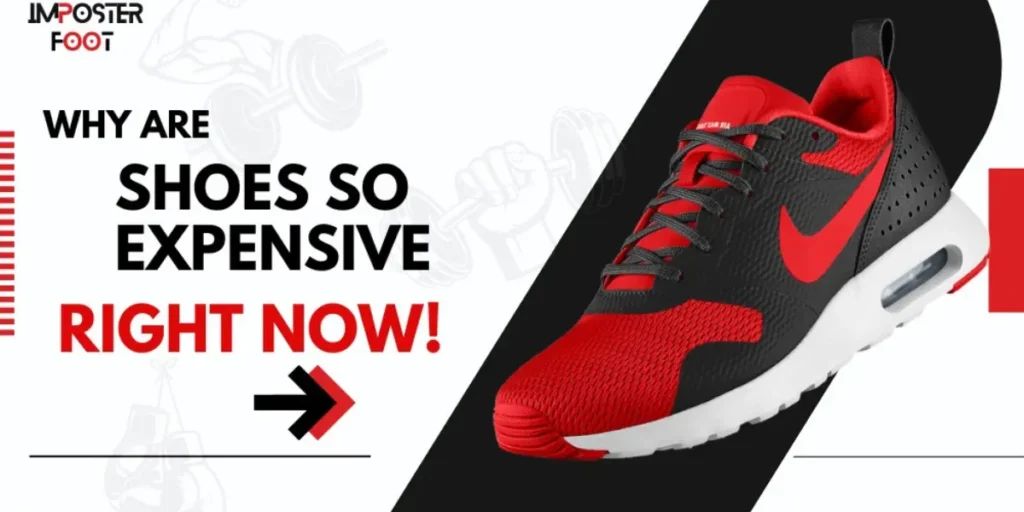
Ever wondered why a simple pair of shoes can cost upwards of $100, sometimes even hundreds or thousands of dollars? The truth is, the price tag on your footwear reflects a complex interplay of factors that go far beyond just the materials used. From the sourcing of premium components to the intricate manufacturing processes and the marketing campaigns that build brand recognition, there’s a lot more at play than meets the eye.
This article delves into the multifaceted reasons behind the high cost of shoes, shedding light on the various elements that contribute to the price you pay. We’ll explore everything from the types of materials used in shoe construction to the global supply chain complexities and the labor involved in crafting each pair. By understanding these factors, you can gain a deeper appreciation for the value (and sometimes hefty price) associated with your favorite footwear.
Shoe Materials and Manufacturing
The quality and type of materials used in a shoe significantly impact its cost. Premium materials like full-grain leather, suede, and high-performance synthetics are often more expensive to source and process than their lower-grade counterparts. These materials offer durability, comfort, and aesthetic appeal, justifying the higher price tag for discerning consumers.
Furthermore, the manufacturing process itself can be labor-intensive and require specialized equipment. Techniques like hand stitching, intricate embroidery, and precise molding contribute to the overall cost of production. Advanced manufacturing technologies, such as 3D printing and automated cutting systems, can help streamline processes and reduce costs, but they also come with significant initial investments.
Research & Development in Footwear
Innovation plays a crucial role in the footwear industry, driving advancements in design, performance, and technology. Companies invest heavily in research and development (R&D) to create new materials, improve existing designs, and develop cutting-edge technologies that enhance comfort, support, and durability.
These R&D efforts often involve collaborations with universities, research institutions, and industry experts, further adding to the cost of shoe production. The pursuit of innovation ensures that footwear keeps pace with evolving consumer needs and technological advancements, but it also contributes to the higher price point of many shoes.
Brand Reputation and Marketing Costs
Brand reputation is a valuable asset in the competitive footwear market. Established brands with strong reputations often command premium prices due to their perceived quality, craftsmanship, and desirability.
Marketing and advertising campaigns play a significant role in building brand awareness and influencing consumer perception. Companies invest heavily in marketing efforts to promote their products, create hype around new releases, and associate their brands with positive values and lifestyles. These marketing costs are ultimately reflected in the price of shoes, as consumers are willing to pay more for products associated with reputable and desirable brands.
Global Supply Chain Impact
The global nature of the footwear industry adds another layer of complexity to the cost equation. Sourcing materials from different countries, manufacturing in regions with lower labor costs, and transporting finished products across continents all contribute to the overall expense.
Global supply chains can be susceptible to disruptions caused by factors such as political instability, natural disasters, and fluctuating exchange rates. These unforeseen events can lead to increased production costs and delays, ultimately impacting the price of shoes for consumers.
Labor Involved in Shoemaking
The craftsmanship involved in shoemaking is often overlooked but plays a crucial role in determining the final cost. Skilled artisans and factory workers dedicate time and expertise to every stage of the manufacturing process, from cutting and stitching to assembling and finishing.
Fair labor practices, safe working conditions, and competitive wages are essential considerations for ethical and sustainable footwear production. While these factors contribute to higher production costs, they also ensure that the people who make our shoes are treated fairly and compensated justly.
Conclusion
The next time you purchase a pair of shoes, remember that the price tag reflects a complex interplay of factors beyond just the materials used. From premium components and intricate manufacturing processes to brand reputation, global supply chain complexities, and the labor involved in crafting each pair, there’s a lot more at play than meets the eye. Understanding these contributing elements can help you make informed purchasing decisions and appreciate the value (and sometimes hefty price) associated with your favorite footwear.
